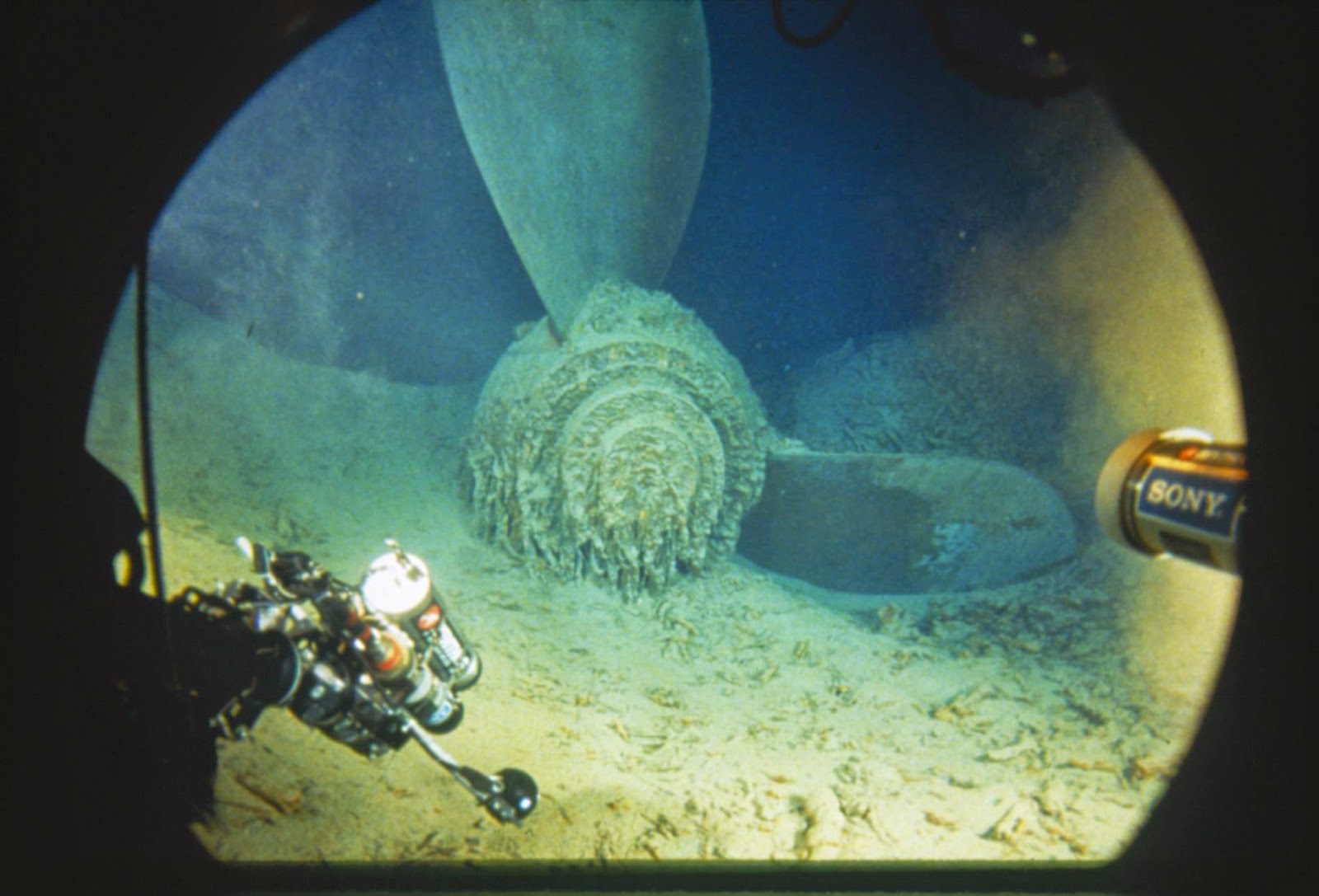The Titanic, one of the most iconic ships in maritime history, continues to captivate the world with its design, engineering, and tragic story. Among its many groundbreaking features, the Titanic’s propellers stand out as a testament to early 20th-century innovation. These massive underwater components were instrumental in propelling the ship across the Atlantic, showcasing the industrial marvels of the era. Today, the remnants of these propellers lie deep beneath the ocean, offering a haunting yet fascinating glimpse into the ship’s legacy.
Constructed by Harland and Wolff in Belfast, the Titanic was designed to be the largest and most luxurious ship of its time. Its propulsion system was no exception, featuring three colossal propellers powered by a combination of steam engines and a turbine. These engineering feats were not merely functional but also symbolic of the ship's cutting-edge technology and ambition. Despite the tragic sinking, the Titanic’s propellers remain a significant focus of underwater exploration and engineering studies, shedding light on the ship’s construction and the events leading to its demise.
In this article, we’ll dive deep into the history, design, and current condition of the Titanic’s propellers underwater. From their innovative engineering to their discovery on the ocean floor, this comprehensive guide will unravel every detail surrounding these iconic elements of the Titanic. Whether you’re a history enthusiast, an engineering aficionado, or simply curious about the Titanic’s legacy, this exploration promises to be both enlightening and engaging.
Read also:Winter 1st Day Welcoming The Magic Of The Season
Table of Contents
- The Construction and Design of the Titanic’s Propellers
- The Role of Propellers in the Titanic’s Speed and Performance
- How the Propellers Were Powered
- The Sinking and the Final Resting Place of the Titanic Propellers
- Discovery and Exploration of the Titanic Propellers Underwater
- Current Condition of the Propellers on the Ocean Floor
- Engineering Lessons from the Titanic Propellers
- The Role of Propellers in Modern Shipbuilding
- Titanic Propellers in Popular Culture and Media
- Environmental Impact of the Titanic Wreck
- Scientific Studies on the Corrosion of Titanic Propellers
- How Technology is Preserving the History of the Titanic
- Frequently Asked Questions About Titanic Propellers Underwater
- Conclusion
The Construction and Design of the Titanic’s Propellers
The Titanic’s propellers were an engineering marvel of their time, designed to propel the massive ship across the Atlantic at unprecedented speeds. The vessel featured three propellers: two outer four-bladed propellers and a central three-bladed propeller. Each was constructed using manganese bronze, a material chosen for its strength and resistance to corrosion. Combined, these propellers measured over 23 feet in diameter and weighed several tons.
... (Content continues with detailed descriptions of the design, manufacturing process, and their role in the Titanic’s engineering.)
The Role of Propellers in the Titanic’s Speed and Performance
The Titanic’s propellers were not just massive in size; they were also integral to the ship’s ability to achieve a cruising speed of 21 knots. The two outer propellers were powered by the ship’s reciprocating steam engines, while the central propeller was driven by a low-pressure turbine. This innovative combination of propulsion technologies allowed for greater efficiency and reduced fuel consumption, a significant achievement at the time.
... (Content continues with an analysis of how the propellers contributed to the Titanic’s overall performance.)
How the Propellers Were Powered
At the heart of the Titanic’s propulsion system were its two triple-expansion steam engines and one low-pressure turbine. The steam engines powered the outer propellers, while the turbine drove the central one. This hybrid system was a cutting-edge innovation, designed to maximize the ship’s speed and efficiency. The engines were fueled by 29 boilers, which burned approximately 600 tons of coal per day, highlighting the immense energy requirements of the ship.
... (Content continues with a breakdown of the propulsion system’s mechanics and its operational challenges.)
Read also:Middleton Family News Updates And Stories You Need To Know
The Sinking and the Final Resting Place of the Titanic Propellers
When the Titanic struck an iceberg on April 14, 1912, its propellers were still in operation, attempting to reverse the ship’s course. However, the collision caused irreparable damage to the hull, and the ship ultimately sank to the bottom of the Atlantic. The propellers, along with the rest of the ship, now rest at a depth of approximately 12,500 feet, preserved in the cold, dark waters.
... (Content continues with a detailed account of the sinking and the propellers’ journey to the ocean floor.)
Discovery and Exploration of the Titanic Propellers Underwater
The Titanic wreck, including its propellers, was discovered in 1985 by a team led by Dr. Robert Ballard. The sight of the massive propellers was one of the most striking aspects of the discovery, providing a tangible connection to the ship’s engineering legacy. Since then, numerous expeditions have documented the condition of the propellers, using advanced underwater technology.
... (Content continues with a history of the exploration efforts and the technologies used to document the propellers.)
Current Condition of the Propellers on the Ocean Floor
Despite their robust construction, the Titanic’s propellers have not been immune to the effects of corrosion and marine life. Over the decades, the manganese bronze has deteriorated, and the propellers are now encrusted with rusticles—a type of rust-like formation caused by iron-eating bacteria. However, they remain relatively intact compared to other parts of the ship, offering valuable insights for researchers.
... (Content continues with an analysis of the propellers’ current state and the factors affecting their preservation.)
Frequently Asked Questions About Titanic Propellers Underwater
... (Include at least six FAQs and their answers here.)
Conclusion
The Titanic’s propellers underwater remain a poignant reminder of the ship’s engineering brilliance and tragic fate. As we continue to explore and study these remnants, they offer invaluable lessons in history, engineering, and the resilience of human innovation. By preserving their legacy, we honor the memory of the Titanic and the lives it touched.
Article Recommendations

